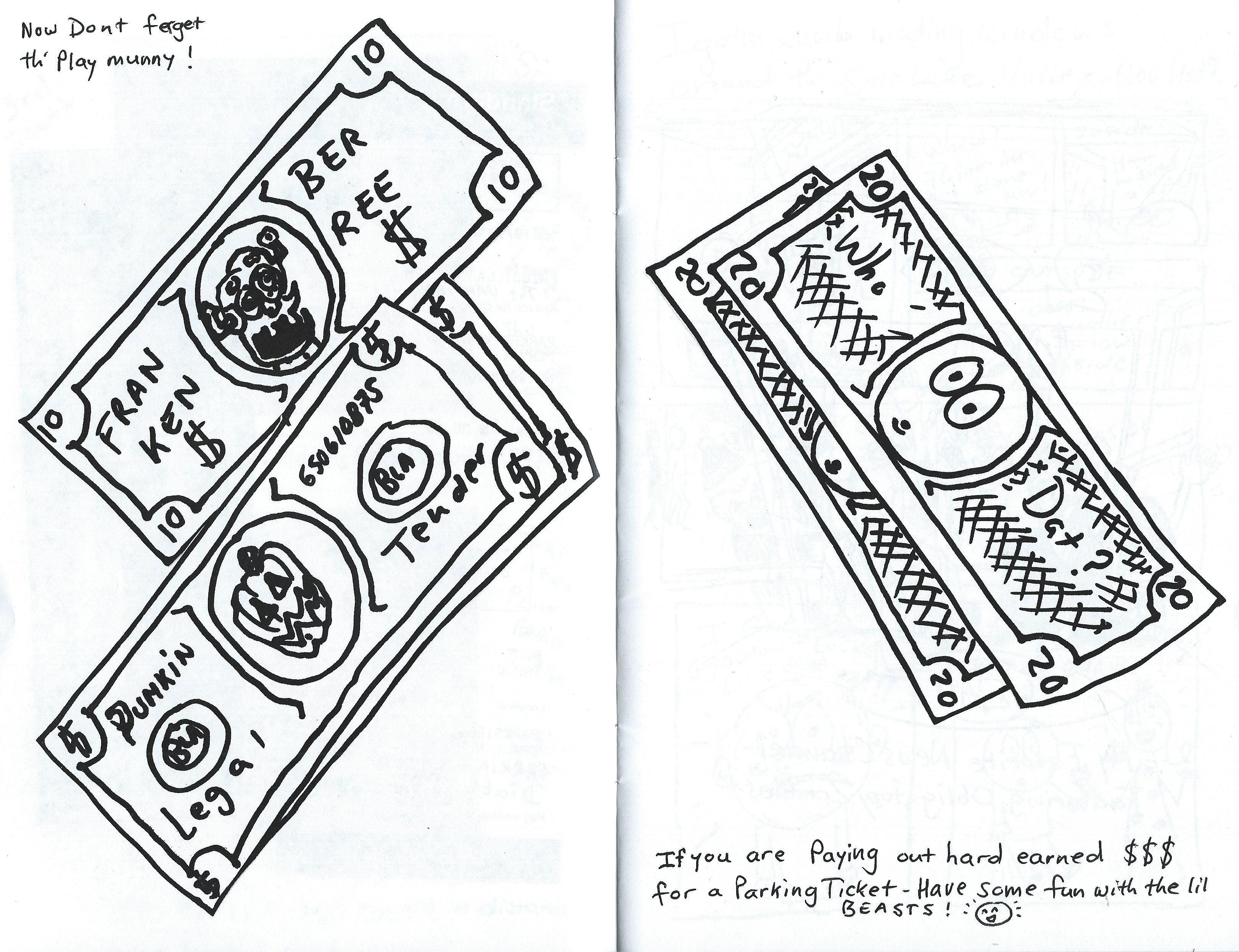Steven Anderson Doodles In The Details
Art
“I had a job at a meat place [working] by myself doing sandwich meat all day in a windowless room,” he says. “They wouldn’t let me have a radio, so I started drawing for the customers,” says Steven Anderson. “I was just drawing on the backs of the package, so when they opened up the box, there’d be little pictures for them—just two or three panels, all cute stuff, nothing offensive. One of the customers complained, so I stopped doing it. Then I started again. I’d forgotten which customer it was that complained, and did another one on their package, and I got fired.” Anderson kind of chuckles after he tells that story. “I suffered for my art,” he says.
 He remembers finding his first zine, SAA DOO, a small cartoony piece written by a high-school kid, in a record store in Arizona in the early ’90s. It wasn’t until he discovered the zine collection at the Main Library, however that Anderson discovered that there was an entire subculture devoted to things he thought could only live in his personal journals. Once he saw those, he knew there were other people out there that might be interested in what he had to say. “I knew that my stuff would appeal to somebody, and that I could have an audience, too,” says Anderson. Zines became the perfect outlet for Anderson to blend his prose storytelling, abstract cartooning, and those all-important details that he’s so fond of.
He remembers finding his first zine, SAA DOO, a small cartoony piece written by a high-school kid, in a record store in Arizona in the early ’90s. It wasn’t until he discovered the zine collection at the Main Library, however that Anderson discovered that there was an entire subculture devoted to things he thought could only live in his personal journals. Once he saw those, he knew there were other people out there that might be interested in what he had to say. “I knew that my stuff would appeal to somebody, and that I could have an audience, too,” says Anderson. Zines became the perfect outlet for Anderson to blend his prose storytelling, abstract cartooning, and those all-important details that he’s so fond of.
He leafs through a box and pulls out the latest issue, one that uses the sides of a parking ticket payment envelope as the front and back cover, and turns to a page toward the back. There’s a xeroxed newspaper article about a film production from the early ’60s, and across the top of the page is a second image that reads, “Deseret News And Telegram, Salt Lake City, Friday, October 6, 1961.”
 “I’m not sure if anyone even knew this existed,” says Steven Anderson. “It’s Carnival of Souls. They actually call it Carnival of Stars here, but I’m thinking that when they were filming around town, they didn’t want to call it that because that might, you know …” He goes on to describe that, over multiple viewings, he had been trying to pin down the exact dates that filming took place in Utah. He’d had the actual article for a while but never knew when it was actually written, and was desperate to find out.
“I’m not sure if anyone even knew this existed,” says Steven Anderson. “It’s Carnival of Souls. They actually call it Carnival of Stars here, but I’m thinking that when they were filming around town, they didn’t want to call it that because that might, you know …” He goes on to describe that, over multiple viewings, he had been trying to pin down the exact dates that filming took place in Utah. He’d had the actual article for a while but never knew when it was actually written, and was desperate to find out.
“I was watching the movie over and over again, and I thought, well it’s fall, because there were leaves all over the place, but I also saw ZCMI—before the ZCMI mall—and in the windows, it looked like portraits of the prophets,” Anderson continues. “I thought it might have been during Conference, and I knew the movie came out in ’62, so they probably filmed it in ’61, so I went to the library, grabbed a roll of microfilm and sure enough, I saw the article.”
Steven Anderson beams with a sense of pride while telling the story, and it’s clear that he relishes in knowing and including these kinds of details, even if hardly anyone else will. Though keeping a monthly schedule for Dithering Doodles is something that Anderson would love to see happen, he knows that it’s nearly impossible—but he’ll still at least try. In the meantime, keep an eye out for a copy next time you’re at Diabolical Records, the library, or checking out the magazine racks at a coffee shop. Anderson has a tendency to drop one wherever someone might find it, because after all, it’s still all about leaving his mark.
